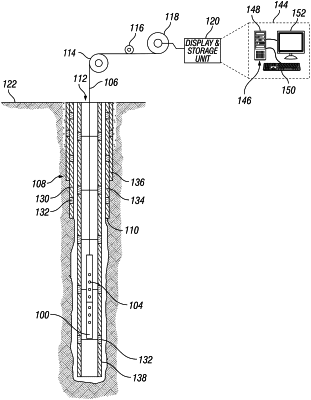| CPC E21B 47/107 (2020.05) [G01N 29/38 (2013.01); G01N 29/40 (2013.01); G01N 29/42 (2013.01); G01V 1/50 (2013.01)] | 20 Claims |

|
1. A method for removing a guided wave noise in a time-domain, comprising:
recording one or more acoustic signals with one or more receivers on an acoustic logging tool at a first location, wherein the one or more acoustic signals are raw data;
determining a slowness range;
estimating a downward guided wave noise by stacking the one or more acoustic signals based at least in part on a positive slowness;
estimating an upward guided wave noise by stacking the one or more acoustic signals based at least in part on a negative slowness;
identifying a dominant direction of propagation;
identifying a slowness from a highest stacked amplitude for the dominant direction of propagation;
estimating a downward guided wave noise with the slowness;
estimating an upward guided wave noise with the slowness;
subtracting the downward guided wave noise and the upward guided wave noise from the raw data; and
moving the acoustic logging tool to a second location, wherein the second location is determined by the one or more acoustic signals.
|